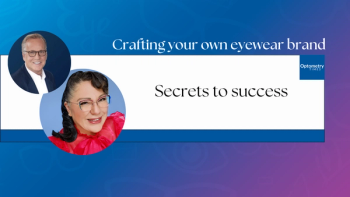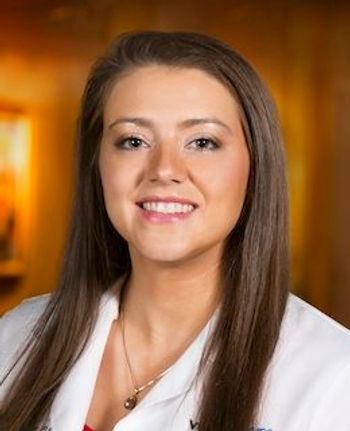
ODs’ top 4 gripes about vision care plans: Part 5-Misleading information and misinformation
In Part 5 of his five-part blog series on vision care plan gripes, Carl Spear, OD, MBA, FAAO, discusses how misleading and wrong information can affect patients’ perceptions of your clinical care and practice.
The views expressed here belong to the author. They do not necessarily represent the views of Optometry Times or UBM Medica.
In order to continue this dialogue and in an attempt to help bring some clarity to the landscape around vision care plans (VCPs) I have put together a five-part blog series.
In Part 5, the final segment of this series, let’s take a closer look at Gripe Number 4: Misleading information and misinformation.
Related:
Misleading information and misinformation
As I have mentioned in previous blogs, I am not against VCPs. We built a very profitable and successful practice by taking VCPs. I personally have been willing to take the reduced reimbursement for the exam to drive patients into the office. I have also taken the perspective that we will provide the best products and services for patients once they are in the office.
Like many of you, my gripe with VCPs is a lack of education provided to patients and the misinformation that permeates the market.
Below are a few of the comments I received from you:
“Too many patients come in with medical complaints and think they are covered. Many times, the caring doctor feels compelled to take care of people so he takes care of the patient. Thus, insurance companies get away with not paying for medical care.”
“Patients with medical complaints think these plans should cover the visit. When the patients call their VCPs, the plans always respond that they will cover the exam. These plans have created an issue when we try to explain this. Also, these plans are simply discount plans!”
“One of the plans says they cover diabetic exams and pay an extra $5 or $10 for the ‘diabetic exam.’"
Patients usually do not understand their insurance or their VCPs coverages. Often, the information as we ODs understand it and the information provided to patients from the various VCPs is at odds. As ODs we have two options-complain about it or fix it.
I advocate that we fix it. To fix it, we must first know the rules.
Related:
What are the rules for billing patients with a medical diagnosis?
The most important thing you can do is read the guidelines and contract from the managed VCPs. If you read the rules, you may be surprised. The two biggest managed vision plans, VSP Vision Care and EyeMed, both clearly say in their manuals that if a patient has a medical diagnosis, we can and should bill the patient’s medical insurance.
This can become a very touchy subject, and there are a lot of little nuisances in billing the medical insurance correctly. Patient education is where ODs are often at odds with VCPs, because we do not think VCPs do an adequate of providing the proper information to patients.
Here are five things you can do to avoid patient confusion and educate patients on the difference between a vison exam and a medical eye exam:
1. Get medical insurance information
Everything you do at your practice must be a signal to patients that you diagnose, treat, and manage ocular disease. If everything you do is geared toward glasses and contact lenses, then patients are going to be surprised if you bill their major medical insurances.
We start the process of getting medical insurance information when a patient makes an appointment. Prior to scheduling, we ask what insurance he has and get the patient’s information on both the VCP and medical insurance coverage card over the phone.
Prior to the patient coming into the office, we verify coverage for both the VCP and medical insurances. All information that is obtained is then placed in the patient’s chart.
When the patient comes in, we make sure to get a copy of his major medical insurance card for our records. This is a great opportunity to educate the patient and let him know that if he has a medical condition it will be billed to his medical insurance.
2. Sign the form
Included within our patient intake paperwork is education and acknowledgement language about the difference in medical insurance and VCPs.
Figure 1
Figure 1 is the simple form we use as part of our patient intake paperwork. This form allows questions to be answered before the exam begins and sets the patien’s expectations that we will be able to manage and treat his medical eye conditions.
Related:
3.Techs wear scrubs
Over the years we went back on forth on office uniforms. Should we have our staff wear scrubs or should we do another uniform? Ultimately, listening to staff and patients led us to use scrubs for our uniform.
Our staff thinks wearing scrubs makes patients understand that we are more medical in nature. This subtle but important psychological positioning makes conversations easier when discussing medical conditions.
Our staff believes this also helps them get a better patient history. The patient understands we want and need to know about his general health-not just their vision.
4. Communicate
This is one of those must-dos if you want to avoid problems. Nothing is worse than a patient at the front desk yelling that you are billing her medical insurance and all she wants is a pair of glasses. Never mind that she has diabetes, cataracts, and glaucoma.
If this happens in your office, then all I can say is that it is your own fault.
It means you did not communicate with the patient on what you were doing during the exam. You may have told him about all the disease, but did you tell him these are medical conditions so your office will bill his medical insurance? The doctor providing the care must communicate with the patient.
Related:
5. Be consistent
You must be consistent and have a process and protocol in place for how you manage and bill patients. A sure-fire way to get audited and find yourself in deep trouble is to not be consistent with patient management and billing.
I have seen this happen when a husband and wife come in and are billed or treated differently. If your office has more than one doctor, then it becomes even more imperative to have a process to make sure everyone is billing the same. For multi-practice and multi-doctor locations, standardization of the billing process is critical.
Summary
As a profession, it is imperative that we deliver quality medical eye care to our patients. While managed VCPs often send wrong or mixed messages to patients, it is the OD’s responsibility to clarify and educate patients about their VCPs.
By implementing standard processes and protocols in your office, you can educate your patients and avoid complaints or awkward moments in regard to billing.
I look forward to your questions and comments. Email me at
Newsletter
Want more insights like this? Subscribe to Optometry Times and get clinical pearls and practice tips delivered straight to your inbox.


















































.png)


